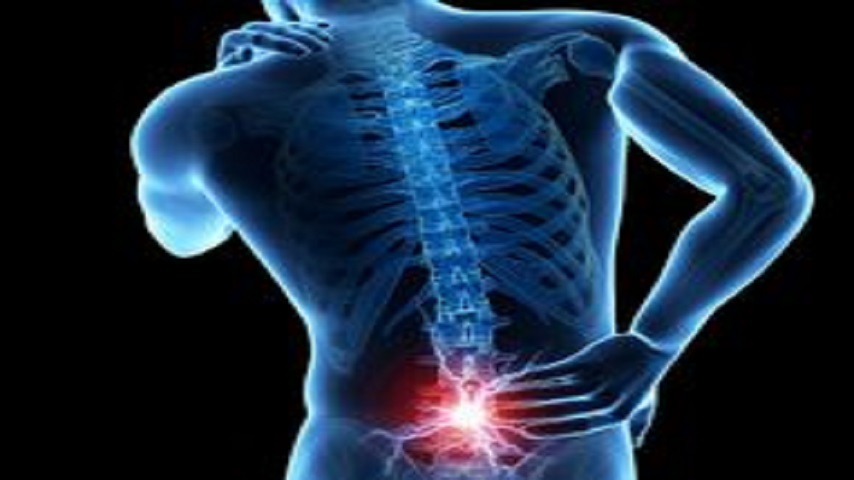How to Communicate Your Severe Pain to Healthcare Providers

Introduction:
Effective communication is essential when it comes to expressing severe pain to healthcare providers. The ability to accurately convey the intensity, location, and characteristics of pain is crucial for receiving appropriate treatment and support. In this article, we will explore the importance of clear pain communication, strategies for describing pain symptoms accurately, and tools that can aid in effective communication. We will also discuss ways to overcome barriers in pain communication, advocate for adequate pain management, and build trust and collaboration with healthcare providers in the journey towards better pain management.
1. Importance of Effective Communication in Expressing Severe Pain
Establishing a Clear Line of Communication with Healthcare Providers
When it comes to expressing severe pain to healthcare providers, clear communication is key. Think of it as giving directions to your favorite pizza place – the more detailed and precise, the better chance you’ll end up with a delicious outcome.
Highlighting the Impact of Inadequate Pain Communication on Treatment
Inadequate pain communication can be a real pain in the neck (well, more like in your whole body). If you downplay your pain or fail to communicate effectively, it’s like trying to fix a leaky faucet with a band-aid – it just won’t work. Your healthcare providers need the full picture to provide the best treatment possible.
2. Understanding Different Types of Pain and Their Impact
Distinguishing Between Acute and Chronic Pain
Acute pain is like a sudden pop quiz – sharp and intense but usually short-lived. Chronic pain, on the other hand, is more like that one annoying song that gets stuck in your head – persistent and disruptive. Understanding the type of pain you’re experiencing helps healthcare providers tailor their approach.
Exploring the Physical, Emotional, and Psychological Dimensions of Pain
Pain isn’t just physical – it can mess with your emotions and headspace too. It’s like a three-headed monster that needs to be tackled from different angles. By acknowledging the holistic impact of pain, you can paint a fuller picture for your healthcare team.
3. Strategies for Describing Pain Symptoms Accurately
Using Descriptive Language to Convey Pain Sensations
Instead of just saying “it hurts,” get creative with your descriptions. Is your pain stabbing, throbbing, burning, or maybe even feeling like a herd of tiny elephants tap dancing on your nerves? The more vivid you can be, the better your providers can understand.
Providing Contextual Information about Pain Triggers and Patterns
Pain doesn’t exist in a vacuum – it’s influenced by a variety of factors like activities, time of day, or even emotional stress. Think of your pain like a detective story; the more clues you provide about what triggers or alleviates it, the easier it is for your healthcare team to solve the case.
4. Utilizing Pain Scales and Tools for Communication
Introduction to Common Pain Assessment Scales
Pain scales may seem simple (like rating your pain on a scale from 1 to 10), but they’re super helpful tools for tracking changes and communicating intensity. It’s like having a pain-themed ruler to measure your discomfort.
How to Effectively Use Pain Diaries and Tracking Tools
If pain were a sneaky ninja, pain diaries and tracking tools would be your trusty ninja-catching net. By jotting down your symptoms, triggers, and treatments, you create a handy reference guide for your healthcare providers to better understand your pain patterns.
5. Overcoming Barriers to Effective Pain Communication
Addressing Cultural and Language Barriers in Pain Communication
When it comes to communicating your pain, cultural and language differences can sometimes feel like climbing Mount Everest in flip-flops. But fear not, brave communicator! Use simple language, visual aids, and interpretation services to bridge the gap. Remember, pain speaks its own universal language.
Navigating Communication Challenges in High-Stress Situations
Picture this: You’re in the ER, your pain is at level 1000, and your eloquence has taken a vacation. Stay cool, take deep breaths, and focus on the key details of your pain. It’s like playing a game of Pain Charades – give clues, be clear, and trust that your healthcare providers are on your team.
6. Advocating for Adequate Pain Management
Empowering Patients to Advocate for Their Pain Management Needs
Time to channel your inner pain warrior! Be assertive, share your pain experience, and don’t settle for pain management that’s as effective as a chocolate teapot. Speak up, ask questions, and remember, you are the MVP of your pain management team.
Discussing Alternative Pain Management Approaches with Healthcare Providers
Variety is the spice of pain management! If traditional methods don’t cut the mustard, explore alternative approaches like acupuncture, meditation, or even a dance-off with your pain. Collaborate with your providers, be open to new ideas, and together, discover the pain relief cocktail that works best for you.
7. Building Trust and Collaboration with Healthcare Providers
Establishing Open and Honest Communication Channels with Providers
Trust is like a plant – it needs nurturing and the occasional pep talk. Be honest about your pain experience, fears, and goals. Share your favorite memes, if that helps! Build a relationship based on mutual respect and understanding. Remember, you’re in this pain journey together.
Creating a Collaborative Care Plan for Pain Management
It’s time to draft your pain playbook! Collaborate with your providers to create a care plan tailored to your pain needs. Outline goals, strategies, and backup plans for those pain curveballs. Communication is key, so keep the dialogue flowing like a waterfall of pain-relieving ideas.
8. Seeking Support and Resources for Chronic Pain Management
Exploring Support Groups and Community Resources for Chronic Pain
No pain warrior is an island! Connect with support groups, online communities, or even your neighbor’s cat who’s a great listener. Share experiences, gather insights, and find comfort in knowing you’re not alone in the pain battle. Together, we rise – and maybe share some pain relief tips over virtual coffee.
Utilizing Multidisciplinary Approaches to Comprehensive Pain Management
Think of pain management as a buffet – why settle for just one dish when you can have a feast of strategies? Embrace a multidisciplinary approach by involving specialists, therapists, and maybe even that funky yoga instructor who swears by downward-facing dog for pain relief. Keep an open mind, explore new avenues, and craft a pain management symphony that hits all the right notes.
Conclusion:
By honing your skills in effectively communicating your severe pain to healthcare providers, you empower yourself to receive the care and support you need. Understanding the nuances of pain description, utilizing tools like pain scales, and advocating for adequate pain management are essential steps towards improving your quality of life. Remember that open and honest communication, coupled with trust and collaboration with your healthcare team, can lead to better pain management outcomes and enhanced overall well-being. Keep striving to express your pain accurately and assert your needs to ensure you receive the best possible care.





